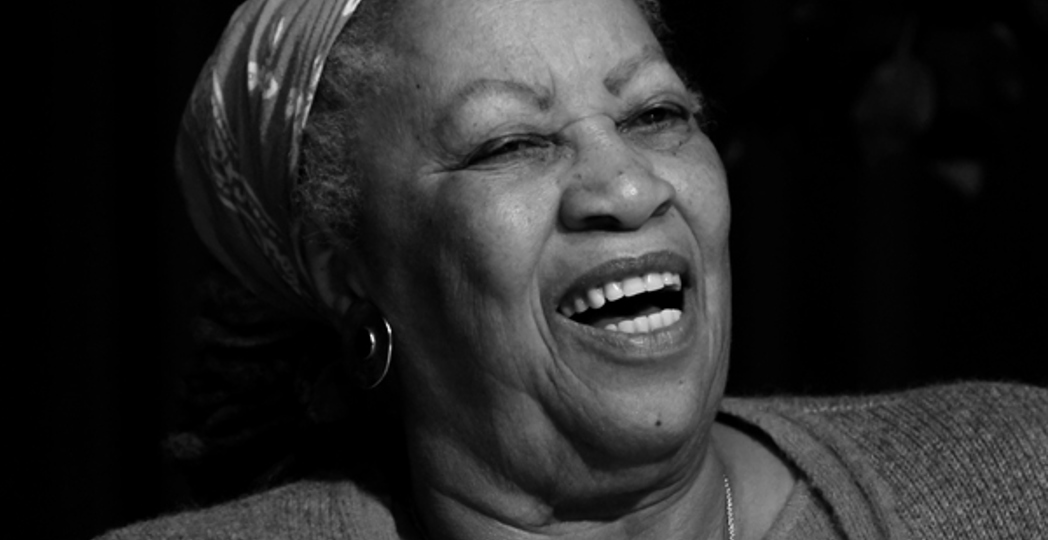A Local Poet Remembers Toni Morrison
by Siaara Freeman | Oct. 23, 2019 | 12:00 PM

Some say the skies over her birthplace of Lorain, the scenery which inspired many of her works, wept at the news. It felt to me like permission from Toni to mourn. Losing her was more than losing a literary hero. It felt closer to losing a very wise and very treasured auntie, someone who took the time to help me find myself and uplift that self.
I grew up lonely, with an overactive imagination. I desired attention to compensate for that loneliness. By the time I was 12 years old, my love of books, of Morrison, was established. Her works became my most treasured gifts. She taught me, a young black girl in Cleveland, my very first and most important literary lesson: representation is so very necessary. To be seen is to be given a gift that has always belonged to you.I like to think my favorite Morrison novel, Sula, found me. It came to me in grandma’s library at 17, shortly after my father was murdered. His death haunted me and Morrison offered escapism, when it was more need than want. Sula was the closest thing to therapy I was willing to accept at the time. Morrison gave me language for trauma, joy and survival. Sula makes appearances when I need it most. That book saved my life. It saw me. It sees me now. It will always see me. And in the seeing, it told me I was not alone.
When Morrison died, I received and extended phone calls of condolences. Every social media feed was flooded with gratitude and reverence, brimming with countless appreciation posts, numerous interviews, excerpts, articles, quotes and breathtaking photos. The longer I read, the more I stumbled across heartbreaking and celebratory reactions, most coming from black women writers in Ohio. I was struck by the magnitude of grieving for someone I had not known personally, someone I would never meet. I owed so much to a stranger. We all did. I needed desperately to say thank you. Once more, Toni showed me I was not alone.
It seems everyone had their favorite Morrison novel. A lot of folks swore by The Bluest Eye, Toni’s first. It was set here, in Toni’s hometown. The titular character, Pecola, is a dark-skinned girl who lives in 1940s Lorain. She thinks of herself as ugly and desires, more than anything, the blue eyes of a white girl. The book was published in 1970, and is still a standard for the conversation on colorism. It announced Morrison to the world.
But my favorite was Sula. Morrison’s second novel, it is a coming-of-age story that manages to be current, nostalgic, concise and epic. If Toni was an auntie, then Sula Peace, the novel’s protagonist, was the mirror Toni placed in front of me, as if to say, “You are still beautiful, even if you feel devastated and devastating.”
Only Morrison, raised in Lorain in the 1940s, could write with such specificity of place and character. In the book, the Lorain we know becomes a small black town in Ohio nicknamed the Bottom. Sula emerges from that place and era. The book winds through a series of Sula’s chaotic but gorgeous joys and struggles.
Sula was the first time I saw a black woman written so uncompromisingly. She is strange, defiant, imaginative, curious, lonely, remorseful but hardly ever sorry, unliked yet still likeable, charming and often charmed, haunting and certainly haunted. From her traumatic childhood, Sula’s innate self-love mingles with self-preservation. She is imperfect with no interest in perfection. At my best and at my worst, I have been described in the exact same manner.
The Bottom, where Sula lived, also felt eerily similar in class and culture to ’90s and early 2000s Cleveland, where I was raised. Sula might as well have walked among us, her feet gracing the broken sidewalks of East 105th Street, her heart staining all it touched.
Sula, in many ways, forms the foundation of my poetry. The character reminds me to own my worst parts and celebrate my best. Sula taught me that love, much like ourselves, is ours to define. Sula is why I will never give up my art form, in fear of becoming dangerous, as Morrison warned. Morrison, through Sula, encouraged me to document survival shamelessly, to seek out the ghosts and the living alike. Morrison taught me the magic in simple observation, the power in myth-making and the necessity of speaking directly to black women.
Morrison wrote with an unmatched talent. She was transcendent, yet undeniably human. She had no need to rely on stereotypes or tropes. She knew blackness, women, Ohio, magic, herself, and she used that knowledge and her boundless imagination to give us worlds where her characters existed, but we could as well. Morrison was and is my hero. She had the power to look in our hearts, then expertly and artfully transfer us to a page, so we could properly see ourselves.
I often think that if Toni could be the first black female editor at Random House and win a Pulitzer with her own work, while being a single mom, then I can edit one more poem. I can run another retreat. I can deal with the rejection letters. I can travel across seas alone for readings. I can manage a chronic illness. I can and will have faith.
Toni gave me the will to continue dreaming, to write myself into existence. She gave me Sula, my antihero, my mirror. Together, they gave me the air and taught me to ride it.
Trending
-
1
-
2
-
3
-
4
-
5










